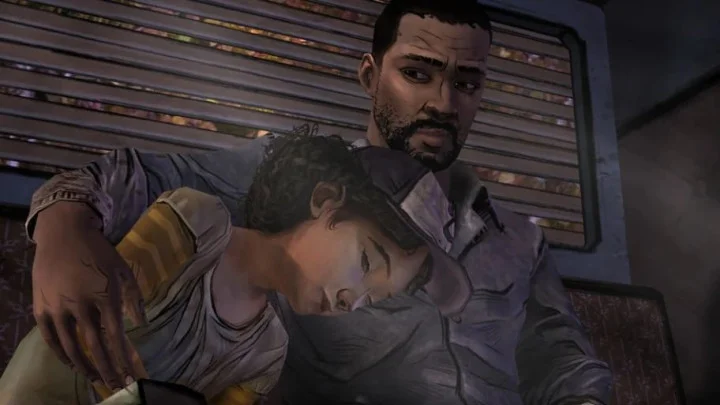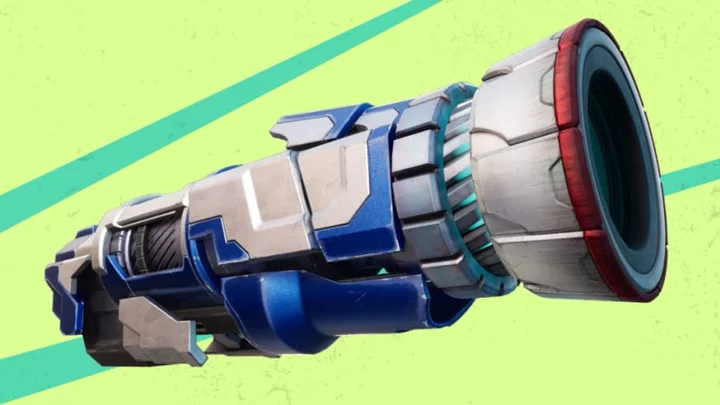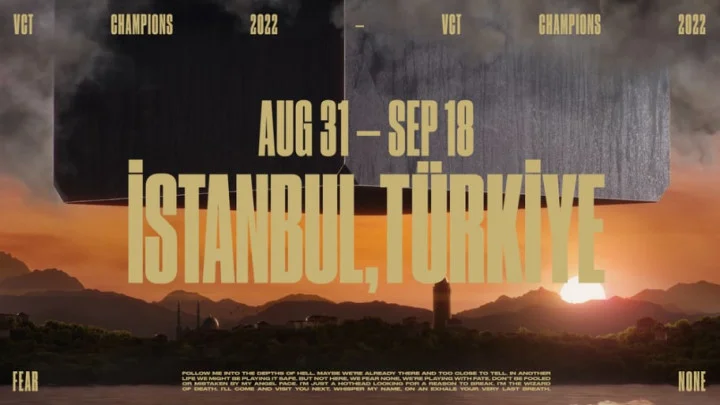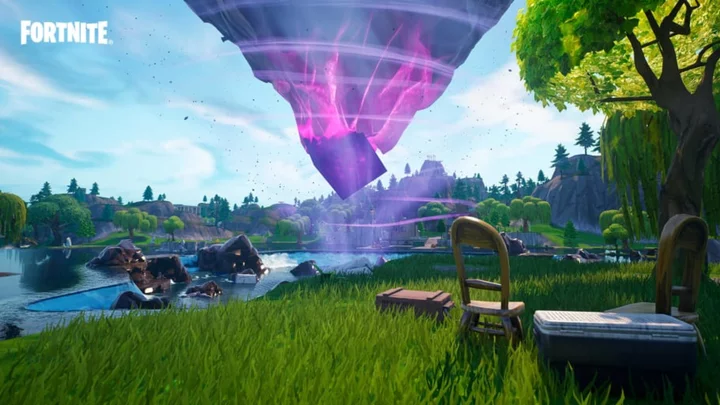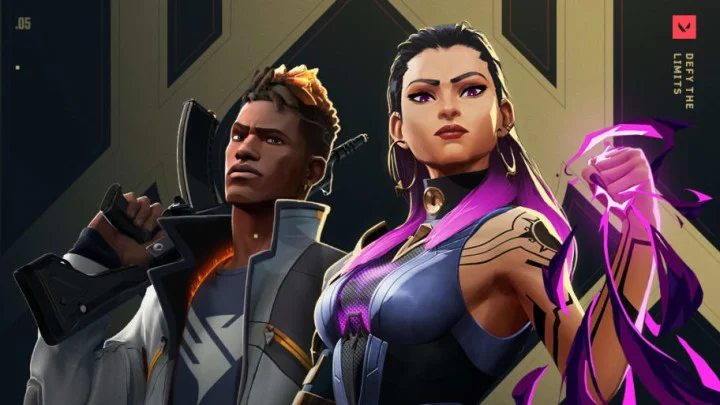“I squeezed the trigger, just like you said,” Clementine of The Walking Dead Game says while Lee teaches her how to defend herself. In the same scene, Lee tells her to always keep her hair short. In the last season, years out from that particular moment, Clementine acknowledges his advice as it never left her. I played each episode as they were released and, when the final season came to be after lengthy turbulence, the time in between made me feel like I’d blinked and Clementine had grown up. Then, she is tasked with taking care of AJ, another child thrust into her care by a whim of fate. History seemed to repeat itself in how starkly she mirrored Lee with her newfound responsibilities.
For me, this game kickstarted a long line of experiences in which I, who outside of games would’ve rather avoided any interaction with children, found myself desperately wanting to live and relish in the responsibility placed upon me. Was it this identity, which was gently forced upon me, part of what evoked the profound connection that I, and, conceivably, other people had? For days, after spending a long period of time attached to the storyline of a game which shines its spotlight on a child, I found a sort of emotional stimulation that was absent in my day-to-day life.
At the very end of The Walking Dead: The Game’s first season, you are presented with the choice of killing Lee as Clementine, or to leave him to turn into a zombie after he is accidentally bitten following a long journey of narrow escapes. Lee’s voice actor, Dave Fennoy, said in an interview with News 9 Live that what he liked most about the game was Lee and Clementine’s relationship, admitting that he would “have cut off [Lee’s] arm” following Lee’s discovery that his zombie-inflicted death was imminent, stating “Lee would have done anything he could to stay with Clementine and not become a zombie”. While Fennoy found a tangible connection to Clementine as a father himself, he eventually said in the interview that “for [the] story to really have the impact that it had, Lee had to die”.
I, too, was averse to the idea of the two separating, and felt as if I was spread thin in trying to decide if I should really allow a child to end the life of a man who had, essentially, become a second father to her. It would’ve been rosy to see the two stay together down the line, and to always miraculously cheat death, using each experience as a way to deepen their reliance on each other — but the game had other plans. I didn’t want Clementine to kill Lee, even though it was entirely possible for you to teach her to what extent was killing morally correct. It was ironic how violent the game was, but when faced with it in a critical moment I found myself hesitant. Killing him, even though he wasn’t himself, was like violently taking away a fraction of a lifetime of a forged parenthood that was so rare and so good that simply pulling a trigger diminished how much it was worth to me.
There was an unexplainable satisfaction in being in Lee’s shoes, as if I was the one chosen to be the main character in a game of house, where my child and I had an undeniable love for each other, only to be strewn apart by the reality of the game’s story. In the final season, the two reunite one last time in a dream, and the feeling I had was indescribable. So many years had passed since I winced and bore the consequence of his death on Clementine’s shoulders, and yet, when they spoke, it was like nothing had ever changed. After Clementine confides in Lee over her anxieties, he responds with “You know I was making it all up as I went along, right? Couldn't let on, of course. With you being so little,” in a sort of dramatic irony that mirrored the nature of my choices as a player. He then acknowledges the role she’s taken on, and how, near the game’s final moments, the story has come full circle:
“You're in my shoes now, raising a kid. Think you got a handle on it? It can't be easy, wanting to give him a childhood, but knowing what it takes to survive now. It was easier for me, since the world was just changing. But you're living in one that's changed completely. You doing okay?”
This, admittedly, was my first and only playthrough of the series. If I wanted to play again, it’d only be to reforge the connection I knew was going to be present between myself, Lee, and Clementine. What was unclear, though, was why this particular responsibility I had — making choices while protecting a child — was the catalyst for such a profoundly strong emotional pull the game had on me. Since then, too, I’ve played other games with the same mechanic: I take care of a child, and whether or not I make my own choices, I find myself either unconsciously or consciously only thinking about the child and what I can do for them to alleviate the strenuous yet unchanging progression of the game’s story. All of the notable titles with this mechanic, strangely, are all games of which I recall my playthroughs fondly.
Among the things I wanted to do was speak to professionals; Dr. Anthony Bean, a Licensed Clinical Depth Psychologist and Video Game Researcher about the choices presented to us in these games. In addition to The Walking Dead Game, The Last of Us also serves as the quintessential example of stumbling into the role of protector to a child. I noted that Ellie and Joel’s relationship had its fair share of trials and tribulations, but the game ultimately capitalizes on the perseverance of their relationship and how favorably its fans perceived it. “You put so much stock energy into that relationship that you want to see it succeed,” he began, “It touches upon our experience of childhood, and how we see it with our parents. In a lot of ways, we want our parents to love us, to be there for us in a lot of different ways. That style of relationship permeates the rest of our relationships for existence.”
While I was trying to think of more choice-based games involving children, my mind went to Life is Strange, which was, curiously, another favorably received franchise, and its second installment, Life is Strange 2. The game takes place in 2016 — putting its main character, Sean, at merely a year younger than myself when the story took place. It had a strict adherence to realism of life at the time, perhaps feverishly so, and at times, it drew me away from completing the game: if I was depressed about the world I was living in and had no hope for the future, why would I go back to a time that I knew had a part in catalyzing it all? I didn’t mind so much that Sean’s kid brother, Daniel, would be tagging along throughout the game — I’d already known the feeling from The Walking Dead. But seeing the world treat them cruelly, forcing them to only rely on each other, was wrenching, in a sense that their bond had a firm grasp on my emotions. What emerged in the end was the profound realization that, instead of feeling like I’d nurtured a child to adulthood, I had played a hand in a future for a child that was not what my heart truly desired.
To make sure this wasn’t some sort of fluke or an easily-explained testament to how easily I get connected to video games I love, I decided to speak to one of my closest friends about her gameplay experiences. Kait Oresky and I worked together at Starbucks for a time, and we eventually formed a bond through our shared perspectives on both video games and life alike. One of the games she’d been playing when we first met was Life is Strange 2, which, coincidentally, employs some of the same elements of choice dichotomized with child-rearing.
“I’m not a person who enjoys taking care of younger people,” she said, “I don’t like kids, so it’s not what drew me to Life is Strange 2. Those factors made me less interested, because the dynamic is unusual for me to be interested in.” Oresky’s path to the sequel was, instead, paved by the mythic relationship between Life is Strange 1’s leads Chloe and Max. Life is Strange 1, which followed Chloe and Max picking up their relationship after years of silence, challenged the player with the destruction of a community versus the destruction of the existence of the girl who seemingly re-inserted herself into Max’s life.
Unlike the severe uncertainty I felt during the first season of The Walking Dead, I had no issue sacrificing Chloe — I’d met a diverse cast of characters and I didn’t feel comfortable knowing that a relationship with a single person was enough to let them all go. That decision was so effortlessly easy, it was obvious: the aspect of a relationship that was built over time, rather than one that was already established, was absent. Life is Strange 2, however, spans across a long period of time in which Sean and Daniel are faced with several challenges to not only their relationship, but to their ability to live.
Oresky felt the same way about Chloe and Max, then saying that in the aftermath of Life is Strange 1, she “wasn’t prepared for how authentic and powerful Sean and Daniel’s relationship was going to feel''. In a noticeable change from the complexity of Max and Chloe’s friendship, Oresky found Sean and Daniel’s relationship to be “well-written and impactful,” citing that it was an aspect of the game that later transcended her initial disinclination towards taking care of a child. I, too, found a profoundly different sense of companionship between the two; I don’t have any siblings, but could definitively say that I would’ve wanted a brother like Sean — and perhaps it was the way I made choices as him that made me more keen to the idea.
Throughout her playthrough, Oresky found that, understandably, she was constantly reminded that she had to keep the future in mind. Later, I asked if Daniel’s significant place in the game and in Sean’s world played an essential part in her decision-making, as it notably did with mine. At one point during the game, your path splits three ways: either pursue a romantic relationship with either of two teenagers Sean has befriended, or spend the evening with Daniel, who will otherwise spend the night in his tent alone. Not knowing that none of these choices would drastically change the story, my mind immediately went to Daniel — so did Oresky’s. Of course he couldn’t spend the night alone. Despite Sean being at a point where he finally meets people his age and is eager to socialize after what seems like an eternity, making sure his ten-year-old brother didn’t feel neglected was the obvious choice. Although I was, admittedly, incredibly eager to see Sean interact with his peers, there was a fear in the back of my mind of an imaginary repentance I’d have to do for not choosing Daniel.
“[Sean and Daniel] are very much the age they represent,” said Oresky, “Sean cares very much about his friend group, the people he’s around, and his lived experience, even though he does care about Daniel too. He is a teenager so there’s a sense of egocentrism to him. Daniel is just a kid, he’s only ten, he’s annoying, just a ten-year-old kid, like an elementary schooler. But family is very important to both of them. I think they’re both interesting and grow in different ways, but all in all, they represent their ages extremely well.”
The major choice in the conclusion of the game involves outrunning a police chase to head to Mexico, with Daniel egging you on according to what you’ve taught him. If he wants to see violence, he’ll ask for violence. If he doesn’t, he’ll plead for you to stop, which is poignant to see all the same. Both Oresky and I got an ending in which the two are separated, never to see or speak to each other again aside from a single postcard that is embellished as part of the end credits. Oresky agreed that Life is Strange takes realism incredibly seriously, saying the ending we got was what she felt was the “most correct”. ”Hopefully, the player should always feel like that when they get to the ending too, with the decisions they make. But, yeah. It’s definitely realistic for Daniel, especially since he was a minor to have to stay with his grandparents and grow up that way, and for Sean to have to keep his distance, because he was basically a felon.”
Trauma bonding is, inarguably, what strengthened the attachment to Sean and Daniel. Oresky mentioned this, alluding that perhaps the all-or-nothing theme each decision had wouldn’t be prevalent in real life. “I can’t really imagine what it would be like,” Oresky began, “but they’re definitely trauma bonded through this experience in which they’ve had to do all of this stuff, and I think it makes them rely on each other more.” The same can be said of the characters of The Walking Dead, and even The Last of Us. Had they all not been tied together by an extraordinary, disastrous circumstance, the bonds that are slowly and visibly built up wouldn’t be of the same weight and caliber. Because of this, it’s difficult to truly say the situation played out exactly the way I, or even Oresky wanted. If I had my way, Sean and Daniel’s father wouldn’t have passed, and they wouldn’t have had to spend so much time on the run, terrified and on edge at every encounter. Again, though, there was something to be said about how close they were, and how at the end of the day, it was the two of them against the world; despite the circumstances, it’s a situation that I would probably do anything to have.
At this point, I was elated to know that the effects of Sean and Daniel’s relationship paralleled that of Lee and Clementine. What I felt for the four of them was real, and not my gameplay style getting the best of me. So, I turned to another professional: maybe the second time around, I could get a sense of a real confirmation, a real, visible unanimous affirmation that yes, taking care of children in games is a uniquely challenging but real phenomenon that changes the scope of your gameplay and your thoughts of the game as a whole.
At the beginning of my conversation with Dr. Rachel Kowert, a Research Psychologist and the Research Director of the mental health nonprofit Take This, I was quick to mention the revelations I’d had while talking to Oresky. She, too, had considered the relationship aspects of Life is Strange critically. While she asserted that Life is Strange is not idyllic, and that nothing “goes over well”, I mentioned the inherent trauma bonding, and if it was really the driving force that was strong enough to forge a connection between the player and characters. “Trauma can intensify social and emotional relationships,” Kowert began, “I’m not sure if there’s an example I can think of where there isn’t trauma in the story somewhere.”
Children, of course, create an amalgamate of new responsibilities that draw in the player. “In [games] there’s a sort of power differential if you are immediately set into a role where you are the caretaker of another character. It very much feeds into the idea of ‘I will be the hero’ or ‘I will save the child’ or ‘I will save the princess’,” Kowert explained. Interestingly, she agreed with Bean’s assertion about desired playstyles, reiterating that the idea of players solely desiring the ‘best gear’ and ‘best ending’, separates themselves from the emotional pull that would’ve otherwise gone into effect.“Some people play just because for sheer desire of getting the best form of the game’s mechanics,” she said, echoing Bean, “[But] for me, definitely, I would be making decisions for the child, like, I don’t care if my person has the best armor — what can I do to support the child?”
What I knew for a fact was that in these games, I enjoyed the autonomy in my choices, and subconsciously enjoyed playing the role of caretaker despite my real-life reservations. Even if it did cause emotional turmoil, I still had the right to choose if I wanted Clementine to kill Lee, and I still had the right to choose if Sean would attempt to take Daniel to Mexico. Perhaps there was some enjoyment in being present for a high-stakes moment not usually seen in daily life; the most I could choose from in real life being restricted to the choice of smiling or maintaining ambivalence when I begrudgingly bring a child a pastry at my job.
Kowert eventually brought up the concept of the Self-Determination Theory (SDT) when I asked about popularity in games with children being connected to autonomous choices. Developed in 2000 by Edward Deci and Richard Ryan, the theory highlights three main aspects required to fulfill psychological satisfaction: competency, autonomy, and relatedness. In Ryan’s 2006 study of the motivational pull of video games, he and his peers found that “game enjoyment and preference for future play were significantly accounted for by psychological need satisfactions” and “autonomy and competence satisfactions also were positively related to post-play mood”.
Consequently, Ryan later attributed this to the claim that, in this regard, games have the potential to provide “pleasure and restoration”, regardless of the intensity of the choices needed to be made. This doesn’t account for well-being and long-term emotional effects, though; the short-term effects of SDT fulfillment were mixed, which can be attributed to the emptiness I felt in knowing that, for example, regardless of my choices, Clementine would be without Lee, or that Sean and Daniel would always be separated. And, possibly, it is the lack of control I had over the situation that contributed to this: spending hours being the sole protector of an innocent character only for a choice in which my inputs actually have no direct impact on the game’s concluding outcome is demoralizing.
“Well-designed games will [fulfill the SDT], and that’s part of the reason why games are so appealing and compelling,” Kowert told me after explaining each aspect of the theory. “When you have the element of the child and the adult, that relatedness factor is going way up immediately from the beginning.”
Upon hearing this, I thought about Bean’s input on the relationship built between the player and a child character once more; citing the parallel to real-life relationships, he emphasized that the idealization of the player always bleeds into gameplay. Pointing to The Last of Us once more, he said “if someone sees that relationship of [Ellie and Joel], like a father-daughter relationship, whether it’s conscious or unconscious they think ‘how do I want mine to be when something happens’? And it’s devastating because they put so much into that relationship and then it’s gone.”
Kowert, on the other hand, capitalized on idealization, stating that “Games, unlike other media, give us the potential to live out idealized versions of our lives,” later claiming that in addition wanting a relationship in a game to parallel our desires, idealization involves thinking of what would be the best and most positive scenario for the two people involved. This, unsurprisingly, also circles back to both Oresky and Fennoy’s concluding thoughts about Life is Strange 2 and The Walking Dead, respectively: if they could choose the ending of their own free will, it would fulfill the stereotype of, in the words of Kowert, ”a nice, neat, happy ending,” instead of the reality, which, while disheartening, makes much more sense.
And what of my sentiments when the bonds forged with children are forcibly severed by the endings of these games? In The Walking Dead Game, Lee dies shortly before the game ends, and its sequel occurs a period of time after his death; in Life is Strange, when Sean flees to Mexico, it is implied that many years have passed and Daniel is an adolescent when he finally receives Sean’s postcard. These outcomes have, somehow, forced the time in between these losses to abscond, leaving us in an awkward position as we have no time to mourn along with the characters.
“These relationships that we form with fictional characters are very psychologically real to us,” Kowert explained, noting that any connection felt to a character in a video game is closely related to this sentiment. The extra responsibility of taking care of a child in a game would have the same nature of implications, and likely be more of an emotional journey for the audience: “There's a whole science of understanding how we feel children need our help or [that] children are ‘weaker’,” said Kowert, “So I imagine that those relationships are intensified when the characters are somehow less able to take care of themselves and you feel some kind of emotional bond towards them.”
At some point, I began to ask myself if my connection to the children I took care of in video games was evidence of a larger loneliness that loomed over my life. What Kowert said was true: it was gratifying to see myself in a position in which the power I had could be used to protect my ‘weaker’ counterpart. Furthermore, when Bean mentioned a desire for these relationships to parallel real-life relationships, I was struck with the thought that I would’ve loved to have been a child in, say, Clementine’s shoes, aside from the violence and death that occupied her universe. It sounds strange to say, but I saw myself visualizing the tenderness I’d feel if I was the one being taught to shoot by Lee.
On the other hand, taking care of children became an identity that empowered me and fulfilled me, the same autonomy that satisfied me was the one to ultimately sever this flowery emotional connection I had. Being relied on has always been the best part, but it is possible that the most realistic and impactful aspect of all is the fact that I made difficult decisions that made me afraid for the future, but still allowed me to continue towards it. Perhaps, this does fulfill a need I didn’t know I had, filling a void that was somewhere in my life — and as a result, I’ll always pursue that unmistakable feeling of loving and being loved.
This article was originally published on dbltap as Are Babysitting Simulators the Cure to My Millennial Loneliness?.

